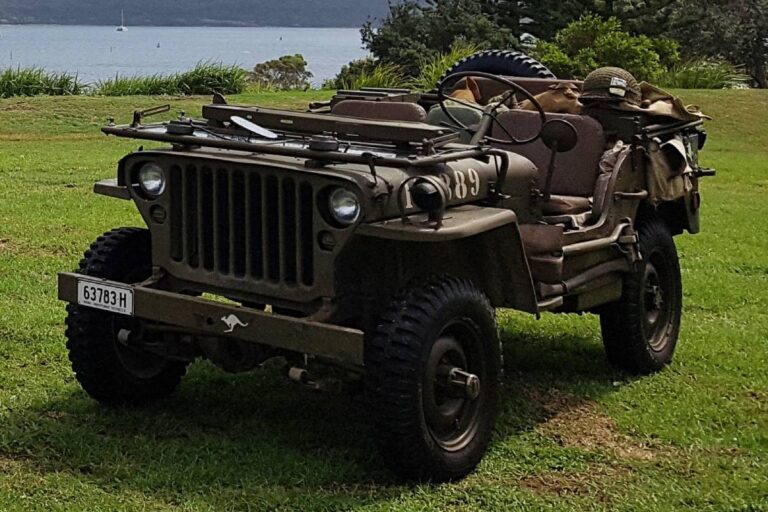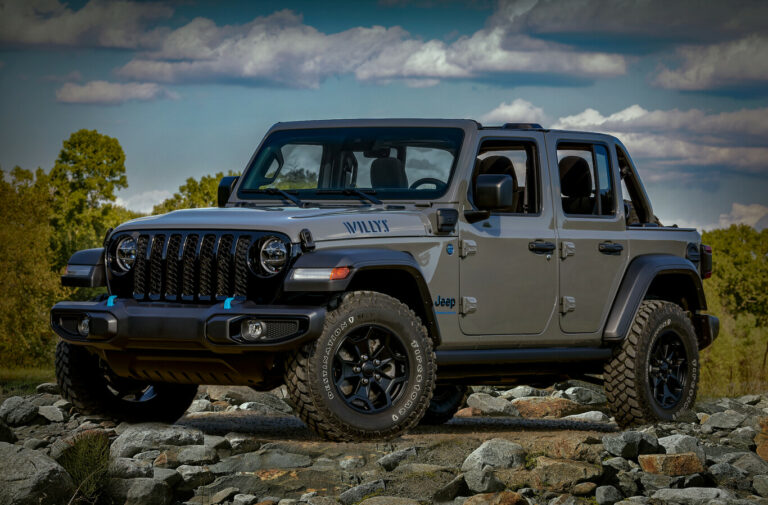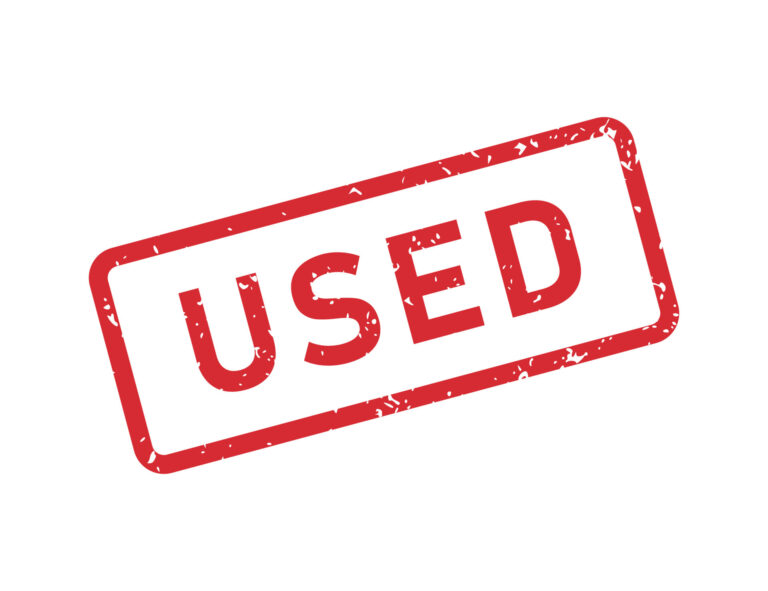1988 Jeep Wrangler For Sale: Your Comprehensive Guide to an Iconic Off-Road Legend
1988 Jeep Wrangler For Sale: Your Comprehensive Guide to an Iconic Off-Road Legend /jeeps.truckstrend.com
The year 1988 holds a special place in the hearts of Jeep enthusiasts. It was a prime year for the Jeep Wrangler YJ, the model that famously replaced the beloved CJ series and introduced a new era of off-road adventure. For many, the 1988 Jeep Wrangler represents the perfect blend of classic ruggedness and modern (for its time) refinements. Its distinctive square headlights, a feature that often sparks passionate debate among purists, along with its robust build and legendary capability, make it a highly sought-after vehicle in the used market. If you’re considering a 1988 Jeep Wrangler for sale, whether as a daily driver, a weekend warrior, or a restoration project, understanding its nuances is key to a successful purchase or sale. This comprehensive guide will equip you with the knowledge needed to navigate the exciting world of the 1988 YJ.
The Enduring Appeal of the 1988 Jeep Wrangler YJ
1988 Jeep Wrangler For Sale: Your Comprehensive Guide to an Iconic Off-Road Legend
The 1988 Jeep Wrangler, part of the YJ generation (1987-1995), holds a unique position in Jeep history. It was the first Wrangler, designed by AMC (American Motors Corporation) before Chrysler’s acquisition of the brand, intended to be a more comfortable and road-friendly evolution of the venerable CJ. Despite the initial controversy over its square headlights – a departure from the traditional round ones – the YJ quickly carved out its own identity.
What makes the 1988 model particularly appealing? It retains the classic leaf-spring suspension that offers excellent articulation for off-roading, combined with a slightly wider stance for improved stability compared to its CJ predecessors. Its relatively simple mechanicals make it a favorite for DIY enthusiasts and those seeking a vehicle that can be easily customized and repaired. The YJ is often seen as the last truly "analog" Wrangler, offering a raw, unfiltered driving experience that newer, more electronically complex Jeeps simply cannot replicate. For many, it evokes a sense of nostalgia, representing a simpler time when adventures were powered by a direct connection between driver and machine and the open road (or trail) called.
What to Look For When Buying a 1988 Jeep Wrangler
Purchasing a vintage vehicle like a 1988 Jeep Wrangler requires a keen eye and a methodical approach. The age of these vehicles means they’ve likely seen many miles and endured various conditions. Here’s a detailed breakdown of critical areas to inspect:
1. Rust: The Ultimate Deal Breaker
Rust is the Achilles’ heel of any older Jeep. A thorough inspection for corrosion is paramount.
- Frame: Pay close attention to the frame rails, especially near the suspension mounts, skid plates, and behind the front wheels. Check for bubbling, flaking, or rot that could compromise structural integrity.
- Body Tub: Inspect the floor pans, especially under the carpets, around the drain plugs, and near the seat mounts. Check the rocker panels, wheel wells, and the tailgate. Rust on the body tub can be repaired, but extensive damage can be costly.
- Fenders and Grille: While less critical structurally, rust here indicates neglect and can be expensive to cosmetically repair.

2. Engine Options and Performance
The 1988 YJ primarily came with two engine choices:

- 4.2L (258 CID) AMC Inline-Six: This carbureted "258" is legendary for its torque and durability. Listen for unusual noises, check for oil leaks, and assess how well it starts and idles. Carbureted engines can be finicky and may require tuning or replacement.
- 2.5L (150 CID) AMC Inline-Four: A more fuel-efficient option, but less powerful. It’s generally reliable but can feel underpowered, especially with larger tires.
- Check for: Leaks (oil, coolant), excessive smoke from the exhaust, proper coolant levels, and signs of overheating. A compression test is highly recommended.
3. Transmission and Transfer Case
- Transmissions: Most 1988 YJs came with a manual transmission (likely an AX-5 or AX-15 later in the year, or a Peugeot BA-10/5). An automatic (TorqueFlite 999) was also available. Shift through all gears, checking for smooth engagement, grinding, or difficulty.
- Transfer Case (NP207 or NP231): Engage 4-high and 4-low. Listen for clunks, grinding, or unusual noises. Ensure it shifts smoothly and the 4WD indicator light functions.
4. Axles and Suspension
- Axles: Typically a Dana 30 front and Dana 35 rear. Check for leaks around the differential covers and axle seals. Listen for humming or clunking noises during a test drive, which could indicate worn gears or bearings.
- Suspension (Leaf Springs): Inspect the leaf springs for sagging, cracks, or broken leaves. Check all bushings (shackle, spring, control arm) for wear, which can lead to poor handling and alignment issues.
5. Electrical System and Interior
- Electrical: Test all lights (headlights, taillights, turn signals), wipers, horn, gauges, and HVAC system. Wiring issues are common in older vehicles, especially if they’ve been exposed to the elements or modified poorly.
- Interior: Assess the condition of the seats, dashboard, and floor. Look for signs of water intrusion or mold. Ensure all gauges work, as replacing them can be tedious. Check the condition of the soft top or hard top for rips, leaks, or damage.
6. Documentation and History
Always ask for maintenance records, receipts for parts, and a clear title. Understanding the vehicle’s history, including previous owners and any major repairs or accidents, can provide invaluable insight into its current condition.
7. Pre-Purchase Inspection (PPI)
Even if you’re mechanically inclined, investing in a PPI by a trusted, independent mechanic (preferably one familiar with older Jeeps) is highly recommended. They can spot issues you might miss and provide an unbiased assessment of the vehicle’s true condition.
Understanding the Different Trims and Features
The 1988 Jeep Wrangler YJ was available in several trim levels, each offering different features and aesthetics:
- Base (S/SE): The most utilitarian version, often with a 4-cylinder engine, minimal interior features, and steel wheels.
- Laredo: A popular upscale trim featuring chrome grille, bumpers, and wheels, along with a more luxurious interior including cloth seats, carpeting, and a full gauge package.
- Sahara: Distinguished by its unique "forest green" or "tan" paint, special graphics, body-color fender flares, and a more rugged, outdoorsy interior with special fabric seats and door panels. Often came with a larger engine and desirable options.
- Islander: A vibrant, beach-themed package with bright colors, "Islander" decals, specific wheels, and sometimes high-back bucket seats.
- Sport: A mid-range trim often with the 4.2L engine, offering a balance of features and capability.
Knowing the trim level can help you gauge the original features and potential value of a specific 1988 Wrangler.
Pricing Your 1988 Jeep Wrangler (or What to Expect to Pay)
The price of a 1988 Jeep Wrangler for sale varies significantly based on several factors. Condition is by far the most dominant, followed by mileage, modifications, engine type, transmission, and geographical location.
- Condition:
- Project/Poor: Often non-running, significant rust, major mechanical issues. These are for experienced restorers or those seeking extreme budget options.
- Fair/Driver: Runs and drives, but likely has noticeable rust, cosmetic flaws, and some mechanical issues that need attention. Good for someone looking to fix it up gradually.
- Good: Runs and drives well, minimal rust, solid frame, good interior, may have some minor cosmetic imperfections. A reliable daily driver or weekend toy.
- Excellent/Restored: Near-perfect condition, minimal to no rust, recent restoration, all systems functioning, show-quality appearance. These are rare and command premium prices.
- Modifications: Well-done, quality modifications (lift kits, upgraded axles, engine swaps) can increase value, but poorly executed or extreme mods can deter some buyers.
- Engine: The 4.2L inline-six often commands a slightly higher price due to its power and legendary reliability.
- Market Trends: Classic and vintage vehicle markets fluctuate. Online marketplaces, specialized forums, and local classifieds are good places to gauge current pricing.
Here’s an estimated price table for 1988 Jeep Wranglers for sale:
| Condition Category | Engine Type | Transmission | Estimated Price Range (USD) | Key Characteristics |
|---|---|---|---|---|
| Project/Poor | 2.5L I4 / 4.2L I6 | Manual/Auto | $2,000 – $6,000 | Significant rust (frame/tub), non-running or major mechanical issues, incomplete, needs full restoration. For experienced builders. |
| Fair/Driver | 2.5L I4 / 4.2L I6 | Manual/Auto | $6,500 – $12,000 | Runs and drives, functional for light use, visible rust spots (surface/minor structural), cosmetic flaws, needs various repairs (e.g., brakes, steering, carb rebuild). |
| Good | 2.5L I4 / 4.2L I6 | Manual/Auto | $12,500 – $20,000 | Solid frame with minimal rust, reliable runner, well-maintained, good interior, minor cosmetic wear commensurate with age, ready for daily driving or light trails. |
| Excellent/Restored | 4.2L I6 (preferred) | Manual/Auto | $20,000 – $35,000+ | Professionally restored or meticulously maintained, rust-free, show-quality paint and interior, all systems functional, highly desirable original or tastefully modified. |
Note: These prices are estimates and can vary based on specific trim level (e.g., Laredo, Sahara), factory options, aftermarket modifications, mileage, and regional market demand.
The Joys and Challenges of Owning a Vintage YJ
Owning a 1988 Jeep Wrangler is an experience unlike any other, offering both immense satisfaction and a few unique hurdles.
Joys:
- Unmatched Character: The YJ has a distinctive look and feel that stands out from modern vehicles.
- Off-Road Capability: Even stock, the YJ is incredibly capable off-road. Its relatively light weight and durable suspension make it a joy on trails.
- Customization Heaven: An enormous aftermarket exists for the YJ, allowing owners to modify everything from suspension to engine, making it truly their own.
- Simplicity of Repair: With fewer complex electronics, many repairs can be done by a home mechanic, saving on labor costs.
- Strong Community: The Jeep community is vast and supportive, offering endless resources, advice, and camaraderie.
- Potential for Appreciation: Well-maintained or restored YJs can hold or even increase in value over time, especially as fewer good examples remain.
Challenges:
- Rust: As mentioned, rust is a constant battle, particularly in areas with road salt or high humidity.
- Fuel Economy: Especially with the 4.2L engine, don’t expect stellar MPG.
- Safety Features: Lacks modern safety features like airbags, ABS, and advanced crumple zones.
- Maintenance: Older vehicles require more frequent and vigilant maintenance to keep them running reliably. Parts are generally available, but specific components might require a hunt.
- Comfort: It’s a utilitarian vehicle. Expect a firm ride, road noise, and less creature comfort than modern SUVs.
Tips for a Successful Purchase or Sale
Whether you’re buying or selling, a strategic approach ensures a smoother transaction.
For Buyers:
- Define Your Needs: Are you looking for a project, a daily driver, or an off-road beast? This will narrow your search.
- Set a Realistic Budget: Include not just the purchase price but also potential immediate repairs, insurance, and registration.
- Be Patient: The right YJ might not appear overnight. Don’t rush into a purchase.
- Inspect Thoroughly: Use the checklist above. Bring a flashlight, a magnet (to check for body filler over rust), and a knowledgeable friend if possible.
- Test Drive Extensively: Drive it on various surfaces, including highway speeds, if possible. Listen for noises, feel for vibrations, and check steering, braking, and shifting.
- Verify Documentation: Ensure the title is clear and matches the VIN on the vehicle.
- Negotiate: Don’t be afraid to negotiate the price, especially if you’ve found issues during your inspection.
For Sellers:
- Be Honest: Disclose all known issues, including rust, mechanical problems, and accident history. Transparency builds trust.
- Clean and Detail: A clean vehicle makes a much better first impression. Remove personal items.
- Take Excellent Photos: Clear, well-lit photos from multiple angles (interior, exterior, engine bay, undercarriage) are crucial for online listings. Highlight unique features.
- Write a Detailed Description: Include mileage, engine/transmission type, trim level, modifications, recent maintenance, and any known flaws. The more information, the better.
- Price Competitively: Research similar 1988 Wranglers for sale in your area and online. Price it fairly based on its condition and features.
- Have Records Ready: Organize all maintenance records, receipts, and the title for potential buyers to review.
- Prepare for Test Drives: Ensure the vehicle is insured and fueled. Accompany potential buyers on test drives.
Frequently Asked Questions (FAQ) about the 1988 Jeep Wrangler
Q1: Are 1988 Jeep Wranglers reliable?
A1: With proper maintenance, yes. The engines (especially the 4.2L I6) and drivetrains are generally robust. However, as with any 35+ year old vehicle, components wear out, and regular attention to maintenance and rust prevention is crucial.
Q2: What’s the best engine for a 1988 YJ?
A2: The 4.2L (258 CID) inline-six is generally preferred for its strong low-end torque, durability, and a vast aftermarket for performance upgrades (like fuel injection conversions). The 2.5L I4 is more fuel-efficient but less powerful.
Q3: Are parts hard to find for a 1988 Wrangler?
A3: Generally, no. Thanks to its popularity and the widespread use of many components across different Jeep models, most mechanical and body parts are readily available from aftermarket suppliers and sometimes even OEM sources. Specific trim pieces might be harder to locate.
Q4: How much rust is too much when buying a 1988 YJ?
A4: Any significant rust on the frame (especially near suspension mounting points) or widespread structural rust on the body tub is a major red flag. Surface rust or minor body rust can be addressed, but extensive rot usually means costly and time-consuming repairs that might exceed the vehicle’s value.
Q5: Can I daily drive a 1988 Jeep Wrangler?
A5: Yes, many people do. However, be prepared for a less refined ride compared to modern vehicles. They are noisier, less fuel-efficient, and lack modern safety features. Regular maintenance is essential for reliability.
Q6: What’s the main difference between a YJ and a CJ?
A6: The most visually obvious difference is the YJ’s rectangular headlights versus the CJ’s round ones. Mechanically, the YJ has a wider track, different leaf springs for a slightly smoother ride, and a slightly different frame design.
Q7: Is a 1988 Jeep Wrangler a good investment?
A7: For the right vehicle, yes. Well-preserved, low-mileage, or professionally restored YJs can appreciate in value. However, most will require ongoing maintenance, and their "investment" value often comes from the joy of ownership and the experiences they provide, rather than purely financial returns.
Conclusion
The 1988 Jeep Wrangler YJ stands as a testament to an era of rugged simplicity and adventurous spirit. Its unique blend of classic Jeep characteristics and a touch of modern refinement makes it a compelling choice for anyone seeking a piece of automotive history that’s still incredibly capable. Whether you’re in the market to buy or sell, approaching the "1988 Jeep Wrangler For Sale" landscape with thorough research, careful inspection, and realistic expectations will ensure a rewarding experience. This iconic vehicle offers not just transportation, but a ticket to a vibrant community, endless customization possibilities, and countless adventures waiting to be discovered. The legacy of the square-headlight YJ endures, promising excitement for years to come.






